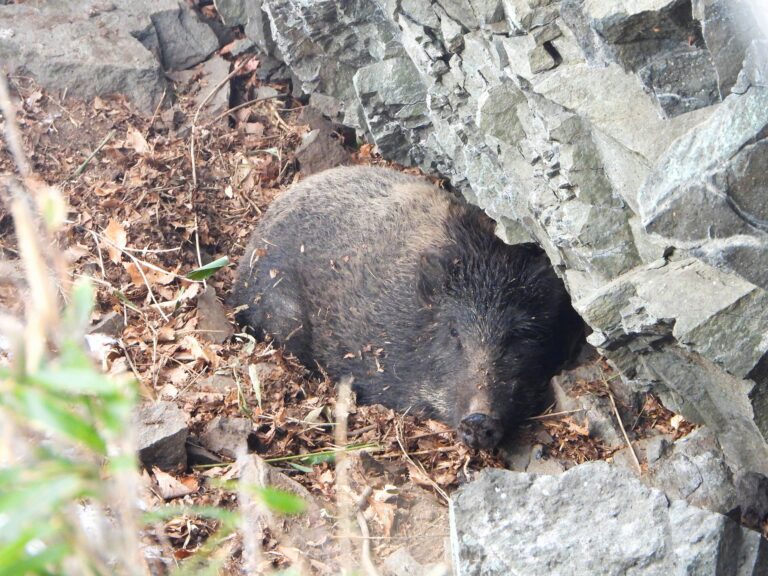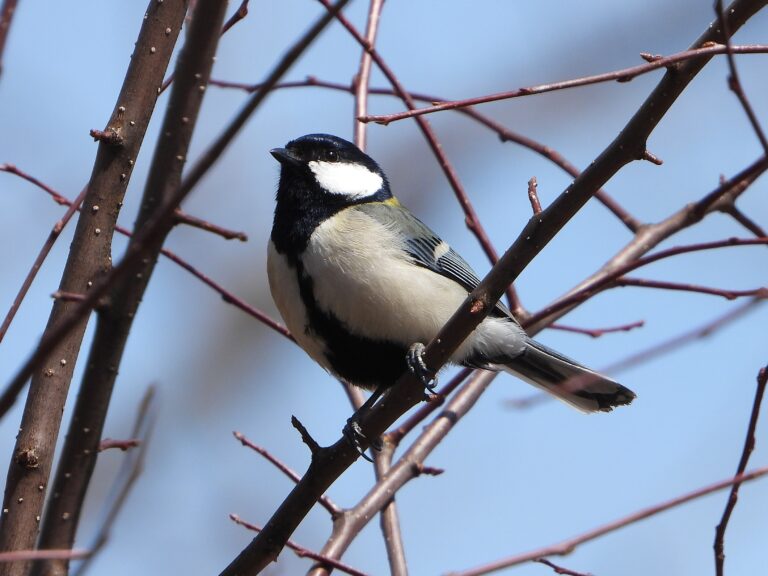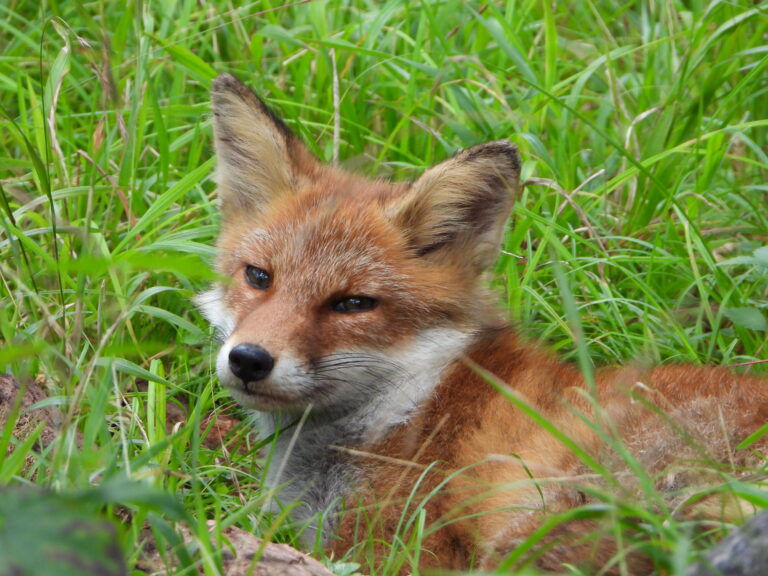Animals of Amami Island – Japan’s Hidden Wildlife Paradise | Wildlife of Japan
Amami Island (Amami Ōshima), floating between Kyūshū and Okinawa, is one of Japan’s last untouched wildernesses.
Its humid evergreen forests, winding streams, and mangrove shores are home to creatures that exist nowhere else on Earth.
Recognized as a UNESCO World Natural Heritage Site in 2021, the island shelters a remarkable concentration of endemic species—animals that evolved here in isolation for millions of years.
This is not the Japan of cities or shrines—it is a world of glowing eyes, shimmering feathers, and ancient bloodlines that still beat beneath the forest canopy.
Endemic Mammals – Survivors from an Ancient World
Amami Rabbit (Pentalagus furnessi)

A true “living fossil,” the Amami Rabbit survives only on Amami Ōshima and Tokunoshima.
Short-eared, dark, and stocky, it resembles rabbits that vanished from the Asian mainland long ago.
It emerges quietly at night to feed on grasses and acorns, and its red eyes can often be seen reflecting in headlights along forest roads.
Now protected as a Special Natural Monument and Endangered species, it remains the beating heart of Amami’s ecosystem.
Read the full profile →
Ryukyu Long-haired Rat (Diplothrix legata)
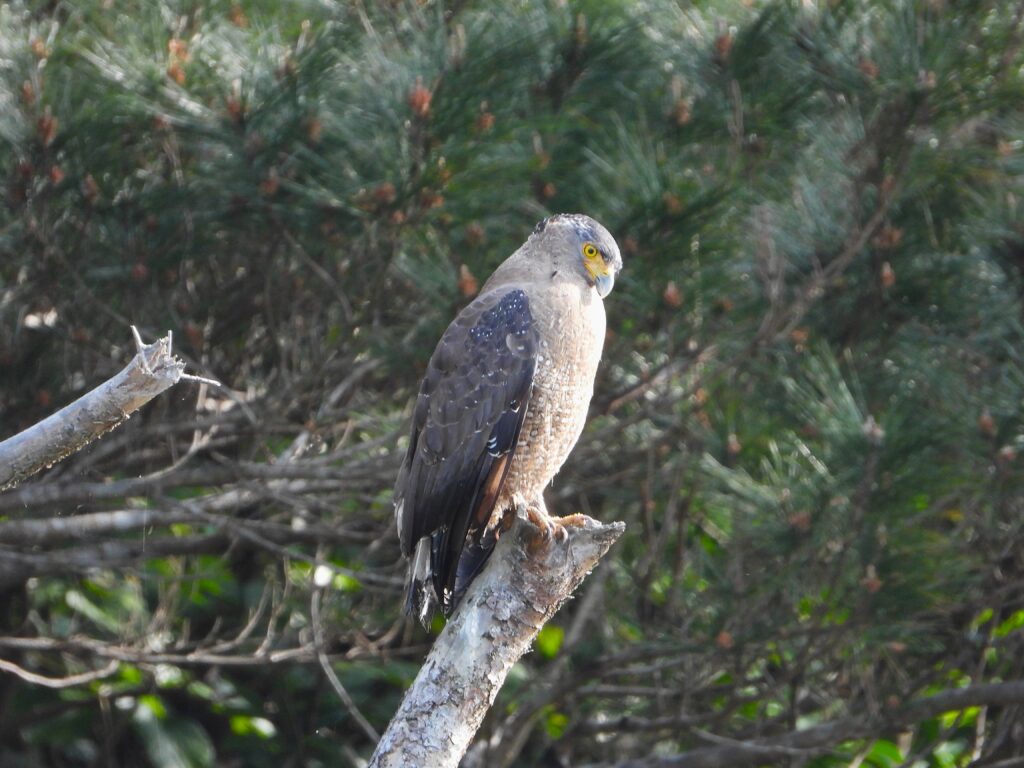
This rare rodent, covered in coarse brown fur, is one of Japan’s largest native rats.
It climbs trees at night in search of fruits and seeds, helping to spread new forest growth.
Because it relies on mature woodlands, deforestation and invasive predators have greatly reduced its numbers.
It is listed as Endangered on Japan’s Red List and found only in the Ryukyu Islands, including Amami.
Read the full profile →
Forest Birds – Colors and Voices of the Island
Lidth’s Jay (Garrulus lidthi)

Flashing blue wings and a chestnut-red body, the Lidth’s Jay is the living emblem of Amami’s forests.
Endemic to Amami and Tokunoshima, it feeds mainly on acorns and buries them for later use—unknowingly replanting the forest itself.
Once endangered by hunting and mongoose predation, this vibrant jay has rebounded through long-term protection.
Its loud metallic call echoes through the dawn forest, announcing that the island is still wild.
Read the full profile →
Amami Woodcock (Scolopax mira)
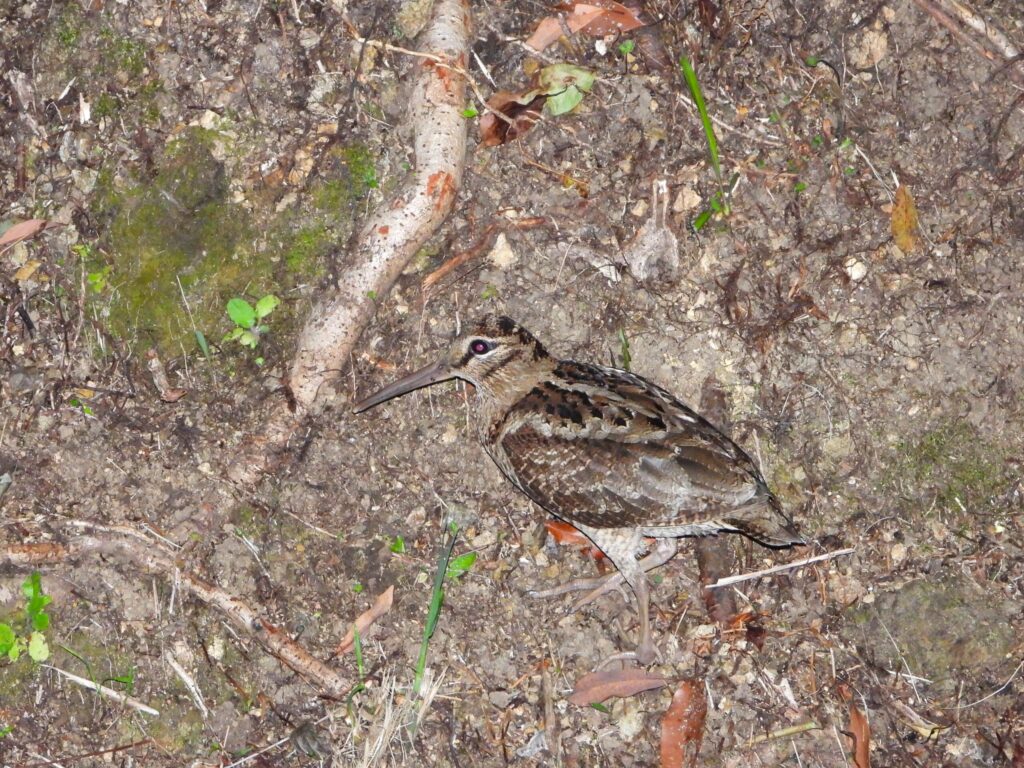
A mysterious, ground-dwelling bird that lives in the shadowy forests of Amami.
It uses its long bill to probe the soil for worms and insects at twilight.
Endemic to the Amami Islands, it is rarely seen even by researchers, making every encounter a once-in-a-lifetime moment.
Read the full profile →
Amphibians – Voices of the Streams
Amami Ishikawa’s Frog (Odorrana splendida)
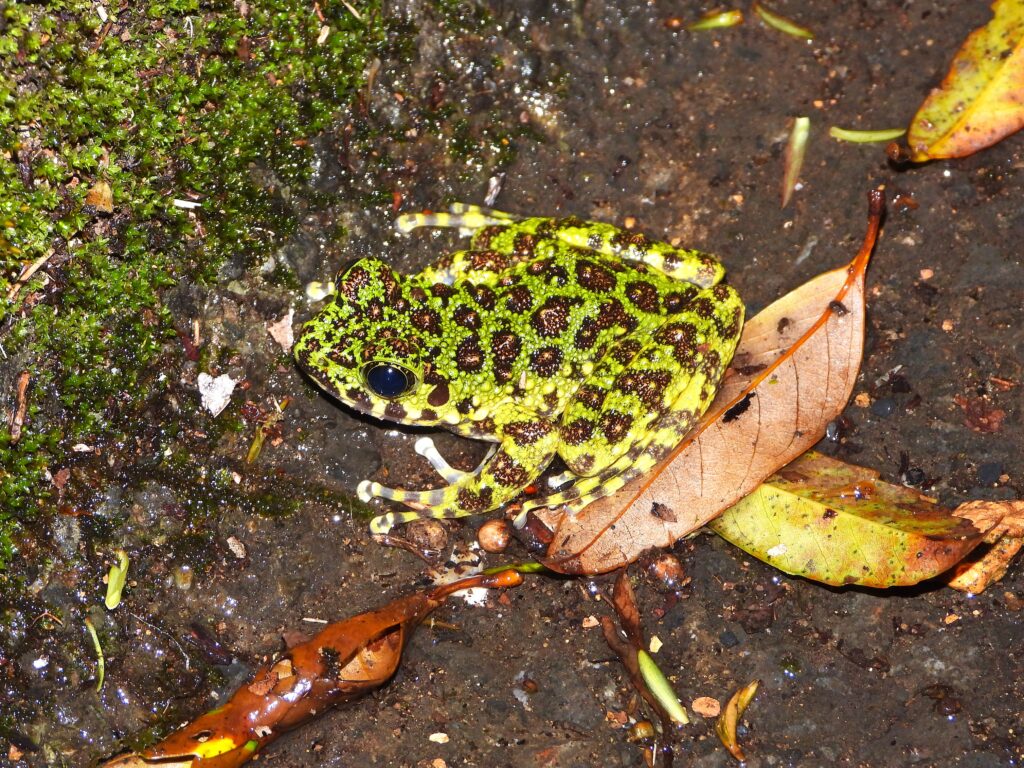
Among Japan’s most beautiful amphibians, this emerald-green frog sparkles with golden flecks beneath the flashlight beam.
It breeds beside crystal streams during the rainy season, its soft calls echoing through moss-covered valleys.
Endemic to Amami Ōshima, it requires pristine water and forest shade to survive.
Read the full profile →
Ototon Frog (Odorrana amamiensis)
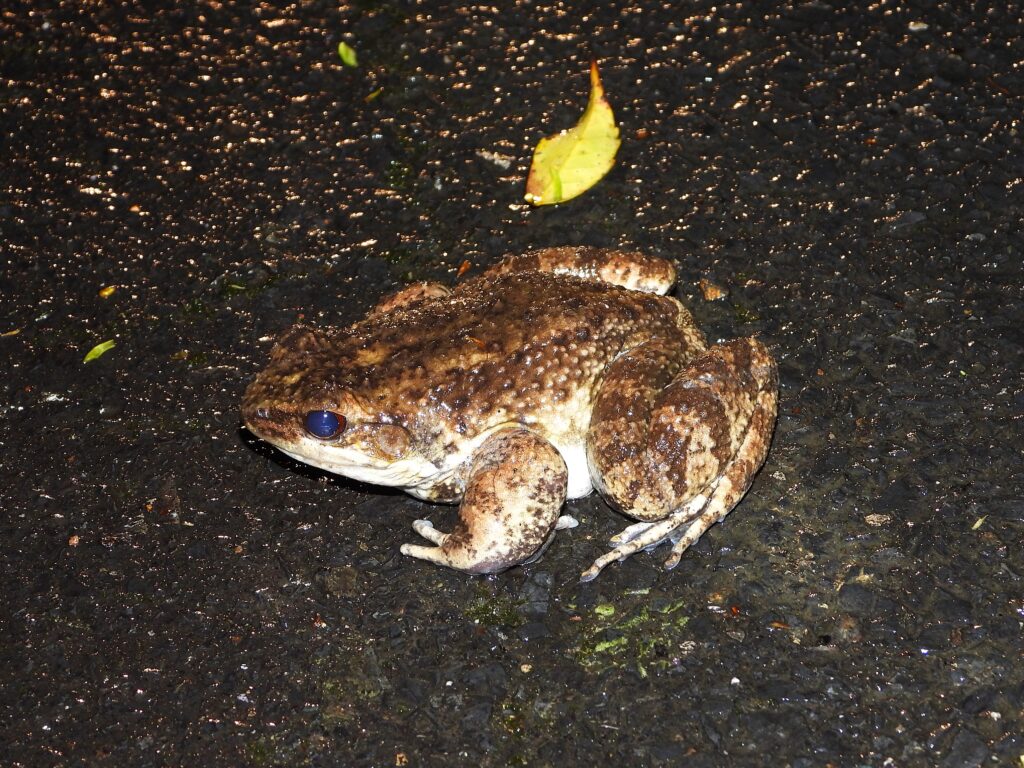
Named for its deep “ot-ton” call that resonates across mountain streams, this robust species thrives in rocky waterfalls and shaded ravines.
Active mainly at night, males call loudly during heavy rains, filling the forest with sound.
It occurs only on Amami and Tokunoshima, where clean water is essential to its life cycle.
Read the full profile →
Amami Sword-tailed Newt (Cynops ensicauda popei)

A small newt with an orange belly and a blade-shaped tail, gliding gracefully in quiet forest pools.
It feeds on aquatic insects and hides among fallen leaves underwater.
Habitat fragmentation has isolated many populations, but conservation efforts aim to protect its remaining strongholds.
Read the full profile →
Snakes of the Night – Predators and Guardians
Habu (Protobothrops flavoviridis)
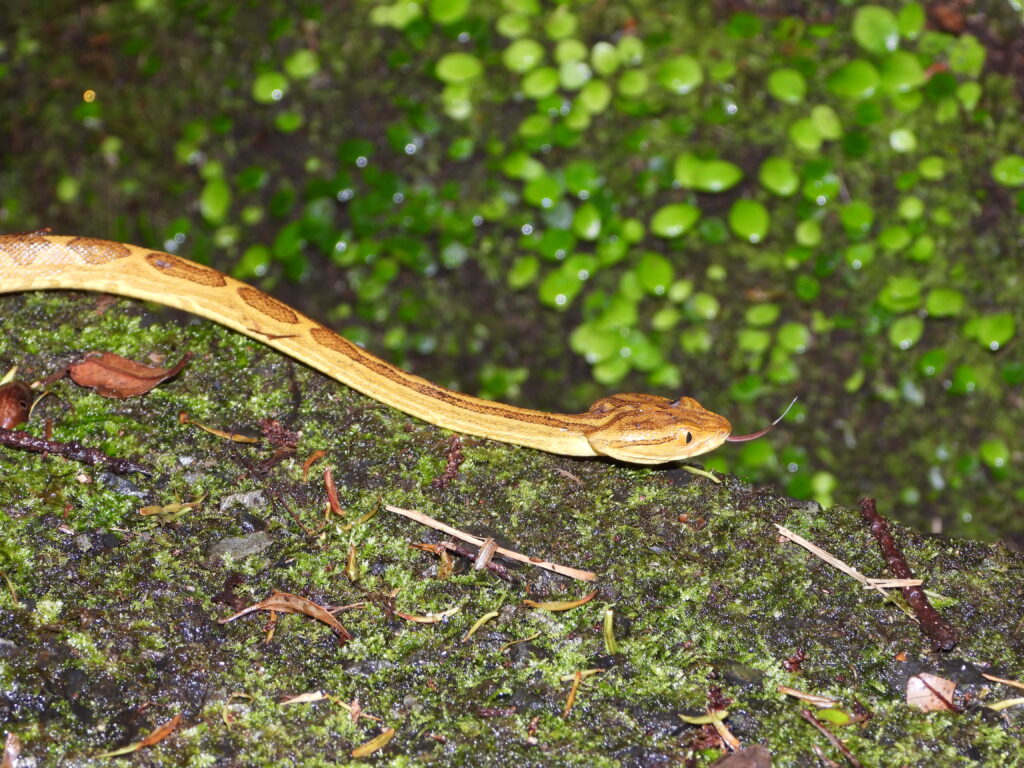
The Habu is the island’s top predator—a large, nocturnal viper that hunts small mammals and birds.
Feared for its venom yet revered as part of the island’s balance, it plays a key ecological role.
Read the full profile →
Loochoo Big-toothed Snake (Dinodon semicarinatum)

This red-and-black patterned snake, native to the Ryukyu Islands, looks dangerous but is harmless to humans.
It feeds mainly on frogs and lizards and is often seen crossing forest roads after rain.
Calm and non-aggressive, it is a favorite subject for herpetologists and wildlife photographers exploring Amami’s forests.
Read the full profile →
Okinawa Keelback (Hebius pryeri)
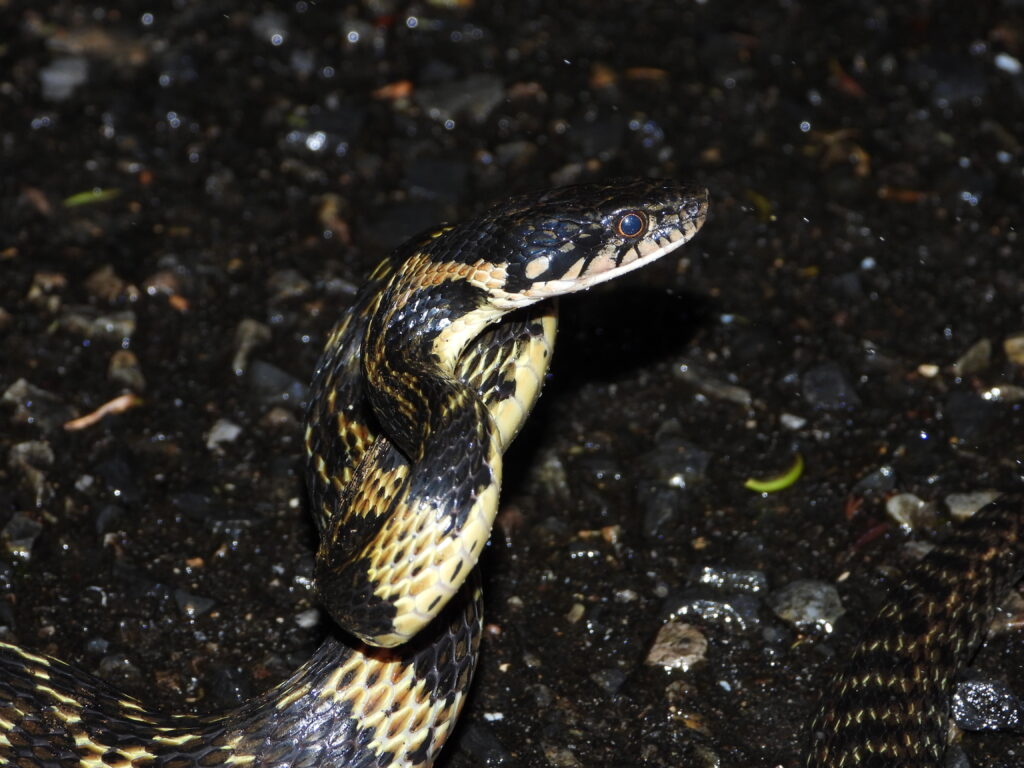
A slender, semi-aquatic snake that glides along clear mountain streams in search of frogs and tadpoles.
Its quiet movement and glossy scales inspired its Japanese name, “Glass Hiba.”
Found across the Amami and Okinawa Islands, its presence indicates a clean, thriving ecosystem.
Read the full profile →
Conservation – Protecting Amami’s Wild Heart
For centuries, Amami’s animals survived in isolation—but the threats of modern times nearly destroyed them.
Logging, roads, and invasive mongooses pushed several species to the brink.
Today, thanks to community-led conservation, wildlife tunnels, and complete mongoose eradication, Amami’s forests are healing.
Populations of the Amami Rabbit and Lidth’s Jay are recovering, and their calls once again echo through the hills.
Visitors are urged to explore with respect—drive slowly, use low lights at night, and never disturb or feed wild animals.
Every mindful traveler helps preserve this extraordinary island for generations to come.
A Night in the Forest – Author’s Impression
On a humid night, headlights reveal two glowing red eyes—a rabbit stands motionless before slipping into the darkness.
From the valley comes the rhythmic “ot-ton” call of a frog, the flutter of a jay’s wings, and the sound of rain on leaves.
In that moment, time stands still. Amami Island is not simply a destination—it is a living museum of evolution, a reminder of Japan’s wild beginnings.
My personal request:
Amami Ōshima still preserves some of Japan’s last primeval forests. Please observe with care—follow the rules, never litter, and respect the life around you. Let’s enjoy watching these animals while keeping this beautiful nature intact.


